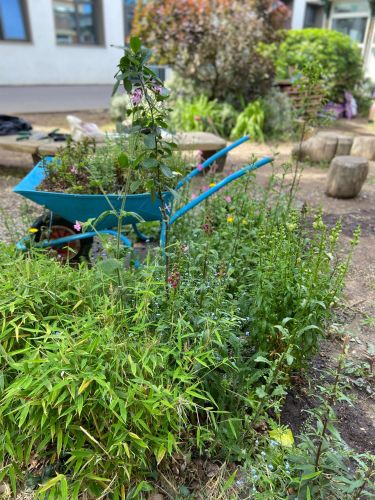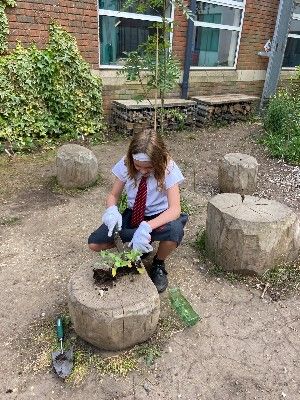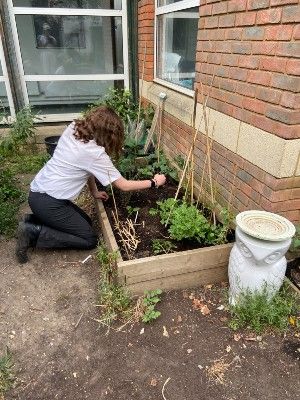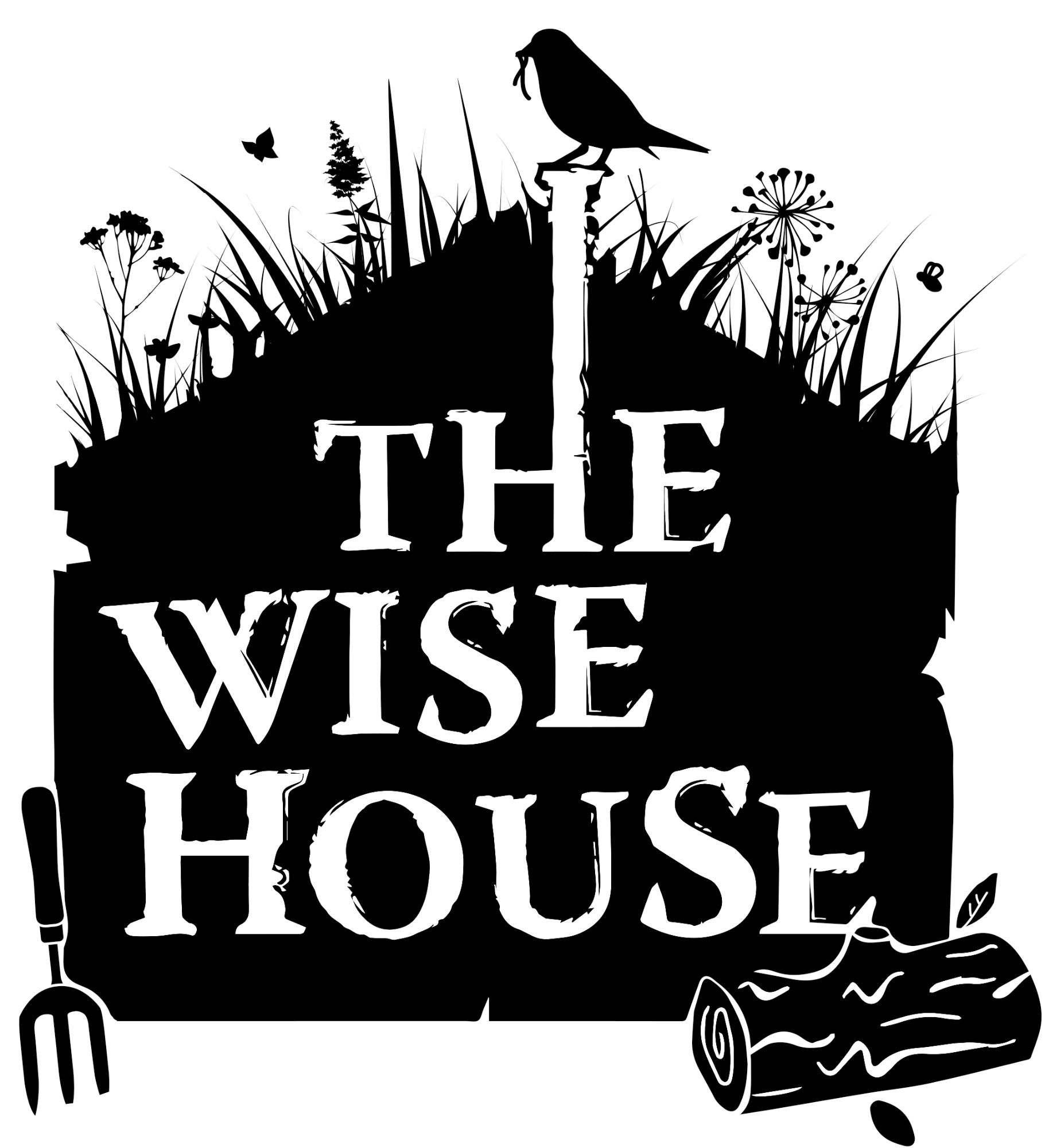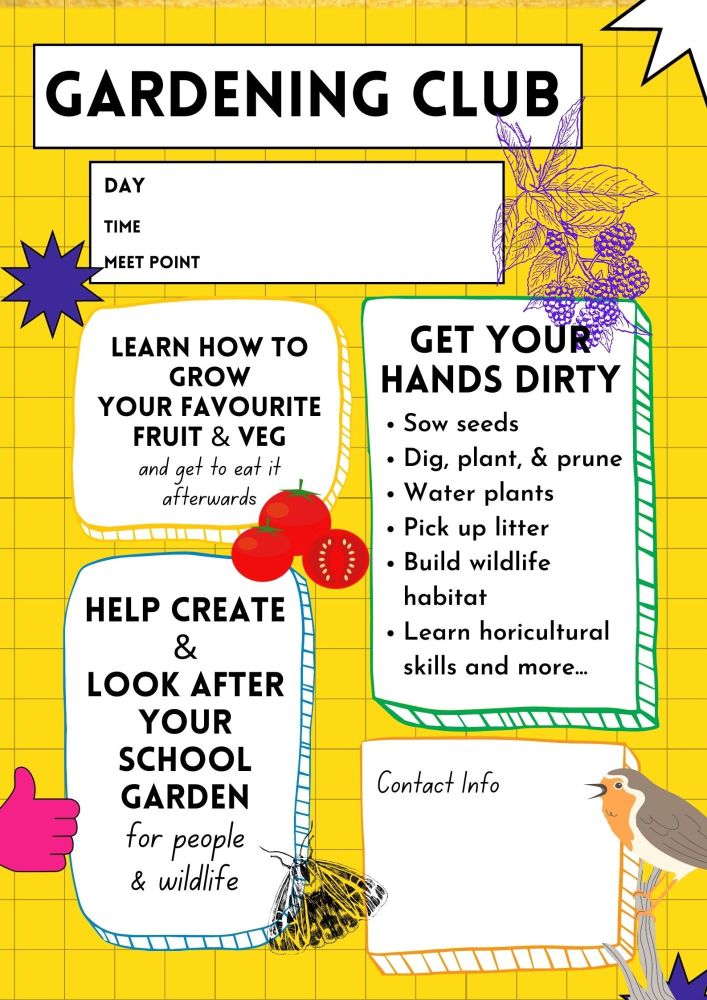School Garden Diary - 2023 to-do and 2022 did do (well & not so well)
Posted on
Our Secondary School Garden for community and nature
‘When we were eating our packed lunch in the garden, we picked some of the tomatoes to go with it.’ said a beaming Amelia, gardening club member
Words spoken in our first gardening club of 2023, when talking about the success of last year's Tiny Tim tomato plants which produced prolifically despite the soaring heat and, at times, lack of water. They sprawled everywhere without a care, just like the teenagers that munched on them!
Amelia’s comment made me smile from ear to ear, as this is exactly what a shared garden is 'for'. A place for people to hang out and be surrounded by growing things that they can pick, eat and enjoy. Before long it'll be early strawberries that the students can feast on!
It was fun to look back at what did and didn’t work in the garden in 2022, before planning for this year. Our carrots were the size of toothpicks with no flavour at all (hard to taste something so small), so they are out for 2023. The cucumbers and courgettes made a decent start but stalled as the weather got hotter and drier.
We will try these again as they generally pretty hardy. To mitigate drought issues, and to save water, we hope to install a water butt this year. We were also late planting which didn't help, so we are going to make sure we keep up with the growing seasons this year.
Expanding on our tomato success, Scott and Amelia want to try a multicoloured tomato variety. After getting past initial snobbery regarding neon-coloured tomatoes, I realised that rainbow veggies will no doubt pique the interest of other students, which is what this is all about!
We also mapped out an Italian-themed bed and will plant oregano, basil, rocket, and sugar snap peas alongside our tomatoes. This will supply us with all of the ingredients needed for pasta sauce and pizza toppings. We plan to speak to cookery and catering to see whether we can work with them to grow and supply some ingredients for school meals and lessons.
We spent the rest of our session getting our hands dirty, preparing our growing beds using the No Dig method, which saw Scott and Amelia laying down leaves, cardboard and compost. We still have half a bed to finish so the students will be bringing in cardboard for next week. The leaves we used were from our leaf mulch bag. It isn't fully ‘mulched’ as yet but it is perfect for a No Dig bed - read on if you haven’t a clue what I am talking about!
Lesson 1: What is No Dig?
What is this No Dig gardening I hear you cry. Music to a non-gardener's ear I should think. It is exactly as it sounds, a method of gardening that minimises digging so that the soil and its millions of organisms are left undisturbed to do the job of aerating and feeding the soil.
Time and energy are channelled into the preparation of the growing bed, so that soil organisms are well-protected and fed with a layer of mulch. They will repay you in turn with beautiful weed-free soil when you come to plant out your seedlings and plug plants.
In the case of a raised bed, as we have at school, you will need to lay a combination of nitrogen and carbon-rich materials on top of the soil. Put more simply this is a mix of brown materials like leaves, wood chip, and cardboard and green materials like manure, grass and plant clippings.
Think of it like a nice lasagna. You can layer up with materials you have to hand rather than being too exact or precious about it. On our school plot, we had already applied fresh, smelly manure before Christmas so on this occasion we added a layer of leaves, then cardboard, before topping off with multipurpose compost. It's a great way to use up materials that would otherwise be thrown away.
This can now be left to ‘brew’ as worms and the like pull all of these materials down into the soil, producing a nutrient-rich, aerated growing bed. This layer of mulch will also protect the soil and keep it warm and moist, whilst weeds will be suppressed.
With any luck, once we hit Spring/ Summer with our seedlings and plugs ready to plant out, our bed should be in tip top condition, giving us strong, healthy vegetables and herbs as a result.
Lesson 2: What is Leaf Mulch?
After finishing a friend's garden before Christmas I said to her 'I'm making you some leaf mulch' and she said 'No thank you'. Ha ha. I also came across a beautiful fat toad nestling in her leaves, who I'm sure was most put out to be re-homed under a nearby tree (under more leaves). It is a reminder not to be too tidy, leaving some piles of leaves, twigs and cuttings for animals and insects to hibernate in over Winter.
Leaf mulch doesn't sound pleasant, but it is infact a nutritious and free mulch for the garden. It does all the jobs described above in No Dig gardening; keeping soil warm and moist and providing food for earth worms who will pull leaves down into the soil and aerate and feed the soil in the process.
All you have to do is collect leaves in a bag and make a few holes. Leaves should be wet; you can either water them or leave nature to do its work if rain is expected. The leaves I collected were already damp so I simply left them in a shady spot. In 6 months you will have a fine mulch, although you can use the leaves before then as they will continue to biodegrade once applied to the soil if they haven't fully done so already.
Jan To-Do List
-
Order Suttons seed catalogue
-
Order seeds & seed potatoes
-
Order peat-free compost
-
Collect cardboard for No Dig beds
-
Create poster encouraging new students to join
-
Start collecting pots and trays for seed planting
-
Source bird feeder
-
Order bird feed
-
Order/ Source water butt
Gardening Club Activity List
-
Sketch out a planting plan for 2023
-
Choose seeds
-
Explain No Dig technique
-
Lay cardboard, rotting leaves and compost on growing beds as per No Dig method
-
Put up poster around school advertising gardening club
-
Hang bird feeder
-
Litterpick
-
Plan pea sprout growing competition across school - as per RHS Pea head people activity
-
Cut raspberry canes to the ground
If you are interested in creating a garden space in your school in which to grow food, create wildllife habitat and provide a green refuge for the school community, then please contact me [email protected] and I can help with set up. The poster below is available to edit and use within your school for promotional purposes.
Please comment below with your thoughts - do you think you could try some of these activities at home, work or school? Any tips or suggestions? All commentors will be enetered into a prize draw to win a selection of seeds from The Wise House.
